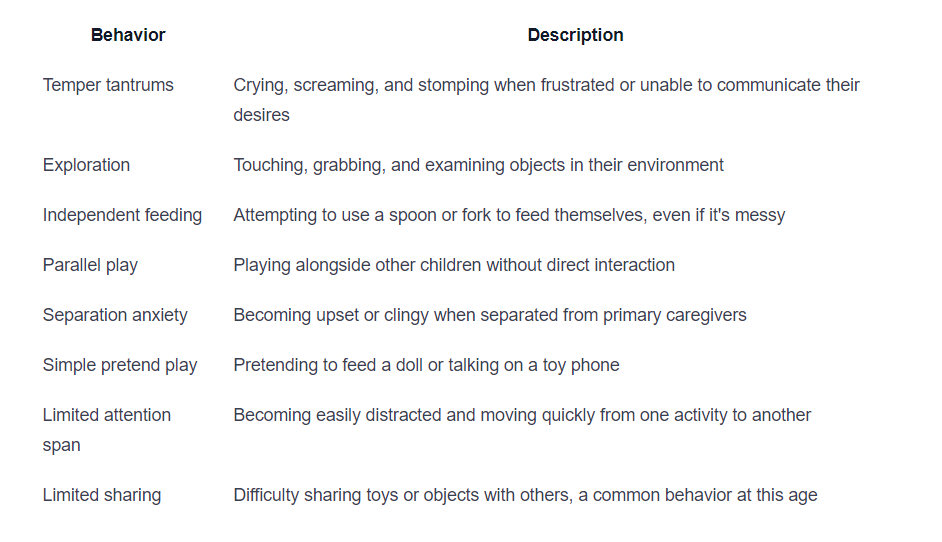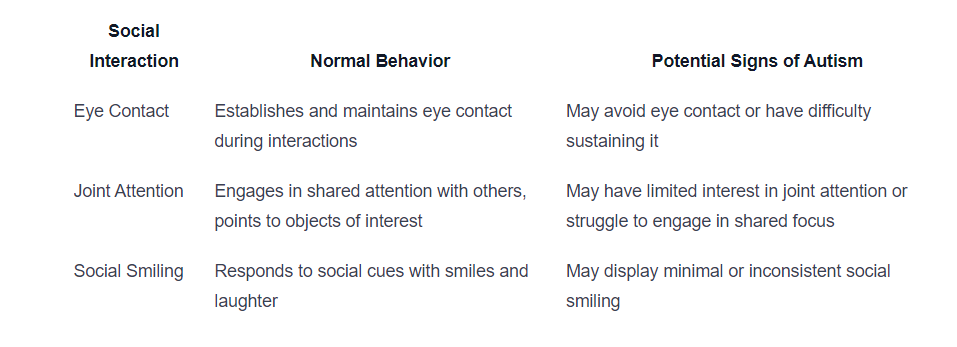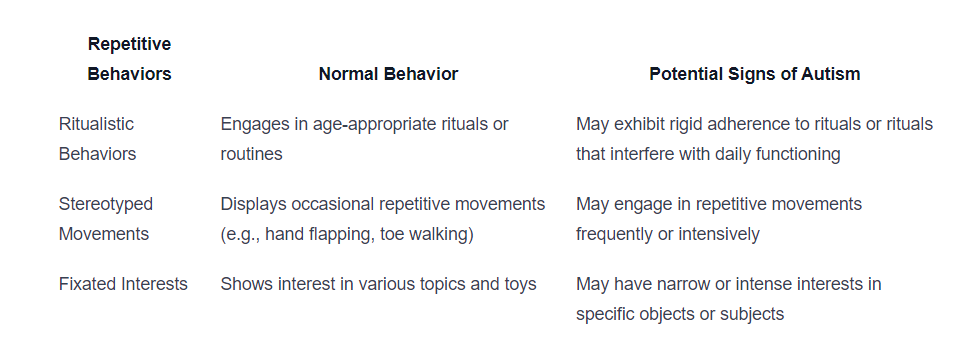Normal Toddler Behavior vs Autism
Unraveling normal toddler behavior vs autism: Understand the differences, seek help, and support diverse needs.

Toddler Behavior: An Overview
Understanding toddler behavior is key to recognizing and addressing any potential developmental differences. It is important to be aware of typical developmental milestones and signs that may indicate atypical behavior.
Typical Developmental Milestones
Typical toddler development follows a predictable pattern, with children achieving various milestones within a certain age range. While every child develops at their own pace, there are general milestones that can be observed. Here are some examples:

Signs of Atypical Behavior
While it is common for toddlers to exhibit occasional challenging behaviors, there are certain signs that may indicate atypical behavior associated with conditions like autism spectrum disorder (ASD). It is important to remember that these signs should be observed consistently and in multiple contexts. Some signs of atypical behavior include:

Recognizing the difference between typical and atypical behavior is crucial for early intervention and support. If you have concerns about your toddler's behavior, it is important to consult with a healthcare professional or developmental specialist for a comprehensive evaluation.
Normal Toddler Behavior
Understanding what is considered normal toddler behavior is essential for parents and caregivers. Toddlers go through a period of rapid development, and their behavior can vary widely. Here, we will explore the characteristics of normal toddler behavior and provide examples of common behaviors you may observe in your child.
Characteristics of Normal Toddler Behavior
Normal toddler behavior is characterized by a range of developmental milestones and age-appropriate behaviors. While each child is unique, there are some common characteristics that can be observed in normal toddler behavior:
- Curiosity and Exploration: Toddlers are naturally curious and eager to explore their environment. They may engage in activities that involve touching, tasting, and manipulating objects to satisfy their curiosity.
- Independence and Autonomy: Toddlers strive for independence and want to do things on their own. They may insist on feeding themselves, dressing themselves, or attempting simple tasks independently.
- Emotional Expression: Toddlers experience a wide range of emotions and may express them through crying, laughing, or tantrums. Emotional outbursts are common as they are learning to regulate their emotions.
- Imitation and Pretend Play: Toddlers often imitate the actions and behaviors of those around them. They may engage in pretend play, using their imagination to imitate real-life situations.
- Language Development: Toddlers begin to develop language skills, although their vocabulary and speech may still be limited. They may use simple words, gestures, and non-verbal communication to express their needs and wants.
Examples of Common Toddler Behaviors
To provide a better understanding, here are some examples of common toddler behaviors you may encounter:

It's important to remember that every child develops at their own pace, and there is a wide range of normal behavior. If you have concerns about your child's behavior or suspect they may be showing signs of autism, it's advisable to consult with a healthcare professional for further evaluation and guidance.
Autism Spectrum Disorder (ASD)
Autism Spectrum Disorder (ASD) is a neurodevelopmental disorder that affects individuals early in childhood. It is characterized by persistent challenges in social interaction, communication, and the presence of repetitive behaviors. Understanding the key features of ASD is crucial in differentiating it from normal toddler behavior.
Understanding Autism Spectrum Disorder
Autism Spectrum Disorder is a complex condition that impacts individuals differently. It is typically diagnosed in early childhood, although signs may be present even before the age of two. ASD affects the way a person perceives and interacts with the world around them, leading to difficulties in social communication and behavior.
Key Features of ASD
To differentiate between normal toddler behavior and ASD, it is important to be aware of the key features associated with ASD. These features may vary in severity and presentation among individuals with ASD. Here are some of the common characteristics observed in individuals with ASD:
Key Features of ASD
Challenges in social interaction, including difficulty with nonverbal communication cues, limited eye contact, and difficulty forming and maintaining relationships
Impaired communication skills, such as delayed language development, difficulty initiating or sustaining conversations, and repetitive or unusual speech patterns
Engagement in repetitive behaviors, such as repetitive body movements (e.g., hand flapping), adherence to strict routines, and intense focus on specific interests
Sensory sensitivities, including over- or under-responsiveness to sensory stimuli such as sounds, textures, or lights
Difficulty with transitions and changes in routine
Restricted or intense interests that are highly focused and specific
It is important to note that the presence of these features alone does not necessarily indicate a diagnosis of ASD. A comprehensive evaluation by a healthcare professional, such as a developmental pediatrician or child psychologist, is necessary to make an accurate diagnosis.
Understanding the key features of ASD can help parents and caregivers recognize potential signs and seek early intervention and support. Early diagnosis and intervention are crucial in providing children with ASD the necessary tools and resources to thrive and reach their full potential.
Differentiating Normal vs. Autism
When it comes to understanding toddler behavior, it's important to be able to differentiate between normal developmental patterns and signs of autism spectrum disorder (ASD). While every child develops at their own pace, there are certain key areas to consider when assessing social interaction, communication skills, and repetitive behaviors.
Social Interaction
Social interaction is a fundamental aspect of toddler development. While some individual differences are expected, there are certain behaviors that may indicate atypical development. Here are some points to consider when differentiating normal social interaction from potential signs of autism:

Communication Skills
Communication skills play a crucial role in toddler development. While language acquisition varies, there are certain communication milestones to look out for. Here are some factors to consider when differentiating normal communication skills from potential signs of autism:

Repetitive Behaviors
Repetitive behaviors are another aspect to consider when differentiating between normal toddler behavior and potential signs of autism. While some repetitive actions are common in typical development, excessive or unusual repetitive behaviors can be indicators of ASD. Here are some factors to consider:

Understanding the differences between normal toddler behavior and potential signs of autism allows for early identification and intervention. If you have concerns about your child's development, it is essential to seek professional help from healthcare providers, such as pediatricians or developmental specialists. Early intervention programs can play a critical role in supporting children with diverse needs and promoting their overall development. By creating an inclusive environment and utilizing strategies for positive behavior management, we can ensure that all children receive the support they need to thrive.
Seeking Professional Help
If you have concerns about your toddler's behavior and suspect that they may be exhibiting signs of autism, it is important to seek professional help. Early intervention and diagnosis play a crucial role in providing the necessary support and resources for children with autism spectrum disorder (ASD).
Early Intervention Programs
Early intervention programs are designed to support the developmental needs of children with autism. These programs provide a range of services tailored to the specific requirements of each child. The goal is to address the challenges associated with autism and promote their overall development.
Early intervention programs typically involve a multidisciplinary approach, with professionals from various fields working together to provide comprehensive care. This may include speech therapists, occupational therapists, behavior analysts, and special education teachers. The specific interventions used will depend on the child's individual needs and may include therapies such as Applied Behavior Analysis (ABA), speech therapy, and social skills training.
By enrolling your child in an early intervention program, you can ensure they receive the support and interventions necessary to maximize their potential for growth and development.
Importance of Early Diagnosis
Early diagnosis of autism is crucial for several reasons. It allows for early intervention and the implementation of appropriate strategies and therapies. Early diagnosis also enables families to access support networks and resources that can assist them in navigating the challenges associated with autism.
Diagnosing autism involves a comprehensive assessment conducted by qualified professionals, such as pediatricians, developmental psychologists, or child psychiatrists. This assessment typically includes observing the child's behavior, evaluating their developmental milestones, and considering information provided by parents and caregivers.
Early diagnosis provides a foundation for early intervention programs, which have been shown to significantly improve outcomes for children with autism. These programs can help enhance communication skills, social interactions, and overall development. Additionally, early diagnosis allows families to connect with support networks and seek guidance from professionals who specialize in autism.
By seeking professional help and obtaining an early diagnosis, you can take proactive steps to support your child's development and ensure they receive the necessary interventions and resources to thrive. Remember, each child is unique, and early intervention tailored to their specific needs is essential for their long-term success.
Supporting Children with Diverse Needs
As we strive to create a more inclusive society, it's important to provide support for children with diverse needs, including those with autism. By fostering an inclusive environment and implementing strategies for positive behavior management, we can help children thrive and reach their full potential.
Creating an Inclusive Environment
Creating an inclusive environment is essential for supporting children with diverse needs, including those with autism. Here are some key strategies to promote inclusivity:
- Education and Awareness: Educate yourself and others about autism spectrum disorder (ASD) to better understand the unique needs of children with autism. This can help create a more empathetic and supportive environment.
- Promote Acceptance and Understanding: Encourage acceptance and understanding among peers, family members, and educators. Foster an environment where children with autism are embraced for their individual strengths and abilities.
- Adapt the Physical Environment: Make necessary adaptations to the physical environment to accommodate the sensory needs of children with autism. This may include creating quiet areas, minimizing visual distractions, and providing sensory-friendly materials.
- Encourage Social Interaction: Facilitate social interactions between children with autism and their peers. Encourage inclusive play and create opportunities for social engagement through structured activities and group projects.
- Collaboration with Parents and Professionals: Maintain open lines of communication with parents and professionals involved in the child's care. Collaborate on strategies and interventions to ensure consistent support across all settings.
Strategies for Positive Behavior Management
Positive behavior management techniques can help children with diverse needs, including those with autism, develop appropriate behaviors and skills. Here are some effective strategies:
- Visual Supports: Use visual supports, such as visual schedules, social stories, and visual cues, to enhance communication and understanding. Visual supports can help children with autism navigate daily routines and expectations.
- Structured Environment: Establish clear and consistent routines and expectations. Provide a structured environment that promotes predictability and reduces anxiety for children with autism.
- Positive Reinforcement: Utilize positive reinforcement techniques to encourage desired behaviors. Provide specific praise, rewards, or tokens to reinforce positive actions and achievements.
- Social Skills Training: Teach and reinforce social skills through structured social skills training programs. Focus on areas such as turn-taking, sharing, and understanding nonverbal cues.
- Individualized Approaches: Recognize that each child with autism is unique and may respond differently to interventions. Tailor strategies and approaches to meet the specific needs of the child.
By creating an inclusive environment and implementing positive behavior management strategies, we can support children with diverse needs, including those with autism. Collaboration among parents, professionals, and educators is key in providing the necessary support and resources to help these children thrive.
Sources
https://www.goldencaretherapy.com/normal-toddler-behavior-vs-autism/
https://www.verywellhealth.com/red-flags-that-dont-indicate-autism-259898
Similar articles
We’re here to help you

Our team is here to assist you in this process. Contact us for any assistance.
it’s easy to apply
We Accept Most Insurances
Our in-network insurance partnerships make ABA therapy more accessible to families throughout our service areas.







Our Insurance Process
We'll request your insurance details to help us verify your plan's coverage for ABA therapy. Once we've received this information, we'll walk you through your benefits, including copayments, deductibles and out-of-pocket maximums, so you know what to expect in advance.
Our team will then handle the preauthorization and all the necessary paperwork.
.svg)





















.jpeg)


































.jpeg)




.jpeg)







.jpeg)











.jpeg)
















